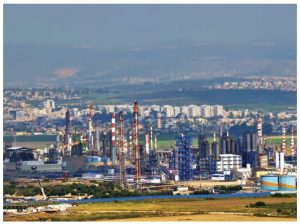
Concerns about the causes and consequences of scarce natural resources have a long and rich history that stretches through classical Greek thought, with Plato and Aristotle; medieval Christian theology, with St. Thomas of Aquinas; all the way to the European Enlightenment, with Adam Smith. The debate has since broadly ranged between two large opposing intellectual camps: the first being those who subscribe to the theories of British economist Thomas Malthus, whose warnings about excessive population growth are not to be ignored, but also contributed to the European colonialism and racism of the 19th Century and the genocidal horrors of the 20th Century. The other camp is made up of utopians, starting with Karl Marx, who have questioned the very concept of natural scarcity in advocating for alternative economic and political arrangements, often premised on transformative technologies that eradicate previous periods of human dearth and deprivations.
The concept at the very heart of all scarcity theories — even the utopian ones, albeit by negation — is that of scarcity, itself a contested concept.
The relevant literature identifies three categories of scarcity: absolute scarcity, relative scarcity and political scarcity. Absolute scarcity broadly refers to the idea that all goods, including natural ones, are finite, a point running through landmark documents such as the 1972 Club of Rome’s The Limits of Growth and its subsequent successors, warning of immediate global collapse because of resource shortages unless humanity changes direction.
Relative scarcity acknowledges natural limits, but argues that society can respond to various shortages through price signals, with institutional and technological changes. For example, goods may be scarce and expensive until substitutes or new technologies render them “plentiful” and “cheap” — and therefore less valuable.
Political scarcity, meanwhile, sees scarcity shaped by political choices that reflect the prevailing outcomes of power struggles between different groups over time. This perspective allows us to see natural scarcities as artificial, even manufactured, to fit prevailing patterns of production and consumption.
This list of the world’s 10 scarcest natural resources does not aim to resolve these theoretical disputes. But it nonetheless presents them, ideally, as useful tools of understanding.
The list itself shares some undeniable sympathy with the popular literature, including such works as those by Jared Diamond, Elizabeth Kolbert and David Wallace-Wells, that warn of absolute scarcities concerning water, soil and other living organisms fundamental for human flourishing. At the same time, it also acknowledges scarcities that are of a relative and political nature.
Consider medical isotopes. The Western world and a growing part of the non-Western world consider them scarce because governments, as well as corporations, have made sizable investments into a health infrastructure not easily abandoned. The people of Central Africa would likely not consider them to be scarce in the absence of more pressing, immediate medical needs.
Central Africans, however, feel the scarcity of rare earths, a scarcity born out of commercial interests to manufacture electric vehicles for rich Western customers concerned about climate change. Workers in Congolese cobalt mines might well ask themselves why they have to suffer horrific working conditions for the manufacture of expensive vehicles, which, while laudable, even necessary, perpetuate existing patterns of urban congestion and sprawl, all for the supposed benefits of personal mobility, with all the ancillary costs of a Western lifestyle.
In short, scarcities have a moral dimension that escapes easy resolution, a point that will become more acute as humanity deals with the effects of climate change, a development that will only worsen many of the scarcities listed here.
1. Fresh water

To appreciate the scarcity of fresh water, consider the following analogy, as it appears in the report Beneath the Surface: The State of the World’s Water 2019 prepared by WaterAid, a non-profit organization.
If a single bucket were to hold all of the water in the world, one teacup would be potable, and of that amount, just one teaspoon would be accessible. This amount — 0.007 per cent of the planet’s water, as calculated by National Geographic — should satisfy the basic daily needs of the more than 7.7 billion who currently share the planet, with billions more on the horizon.
But access to water for drinking, cooking, washing and other daily needs has become increasingly unequal for two broad reasons.
First, geography has flushed some regions with fresh water, while parching others. Asia and the Middle East, home to 60 per cent of the global population, receive little more than one-third of the world’s rain or snow. South America, home to 6 per cent of the global population, receives a quarter.
Second, political incompetence has compounded climatic inequities. As David Wallace-Wells writes in The Uninhabitable Earth, “governmental neglect and indifference, bad infrastructure and contamination, careless urbanization and development” have made an abundant resource scarce, as was the case during the water crisis that gripped South Africa’s Cape Town in 2018.
Drastic conservation measures might have helped that metropolis of four million people avoid Day Zero — the day when all dams would run dry. But as Betsy Otto of the Washington, D.C.-based World Resources Institute (WRI) told The New York Times in 2019, many more Cape Towns loom in humanity’s future as growing cities compete against farmers for access to water.
WRI predicts that 45 cities with a combined population of almost 470 million people will experience what it calls high water stress in 2030 — up from 33 cities with a combined population of more than 255 million as of today.
Overall, more than a billion already live in water-scarce regions, a figure that could reach up to 3.5 billion people by 2025, WRI predicts.
Reasons include growing demand in the face of population growth — according to the United Nations, global water use has exceeded population growth by more than a factor of two — and climate change, an unfolding calamity that ignores both political and temporal boundaries.
Water scarcity has a distinct geography for now, as 12 of the 17 most water-stressed countries in the world lie in the already hot and dry Middle East and North Africa.
Other major regions already affected include the Indian subcontinent, with both India and Pakistan dealing with historic water shortages now.
But available projections make it clear that regions with more moderate climates won’t be spared. Several large cities, such as London and Tokyo, in the “developed” northern hemisphere, have already been preparing themselves for a drier future, if they have not already experienced shortages, as Los Angeles did.
As Wallace-Wells writes, the water crisis, like the climate crisis, remains “soluble, at present.” But the margin of error is thin and he predicts that climate change will cut into it. As WRI notes, climate change will make dry regions drier, and wet regions wetter, thereby creating a level of uncertainty that will only exacerbate the planning and engineering challenges that lie ahead. The stakes could not be higher. The absence of fresh water has caused and contributed to a growing number of armed conflicts around the world, including current conflicts in Yemen and Syria. As such, this deadly dynamic confirms a basic biological fact: Water, a finite resource by any measure, equals life.
2. Soil

“The nation that destroys its soil destroys itself.” U.S. president Franklin D. Roosevelt issued this warning in a 1937 letter to state governors in which he urged them to create additional conservation measures.
Human mismanagement and drought had turned the food-growing interior plains of North America into dust bowls and Roosevelt sought to spur local authorities into additional steps to save and restore local soils. His appeal remains relevant today, but has since acquired a global dimension. Land, in the broadest sense, serves, in the words of the Intergovernmental Panel of Climate Change, as the “principal basis for human livelihoods and well-being including the supply of food, freshwater and multiple other ecosystem services, as well as biodiversity.”
Yet current human uses, which directly affect more than 70 per cent of the global surface free of ice, have done great, perhaps even irreversible damage to this foundation, with agriculture, the founding technique of human civilization itself as one of, if not the biggest, culprits. (About 37 per cent of the world’s land mass is used for agriculture, with 25 per cent of the global total used for pastures and about 12 per cent used for crops. Overall, only 3 per cent of the global total classifies as prime arable land. Agriculture accounts for about 25 per cent of all global emissions of greenhouse gases, if not more.).
According to England’s University of Sheffield Grantham Centre for Sustainable Future, the planet has been experiencing a “catastrophic” loss of arable land. Scientists at the centre estimated in 2015 that erosion or pollution have combined to destroy a third of the world’s arable land during the last 40 years, a dangerous development that requires major changes to agricultural practices lest a tipping point is passed.
This obligation confronts various conditions. The first is biological. Soil formation takes time, and only at the proverbial pace of the tortoise. According to the Grantham Centre, it takes 500 years to form 2.5 centimetres of top soil under normal agricultural conditions. But current human use of soil destroys it at the pace of the hare, as soil erodes off plowed fields 10 to 100 times faster than it forms, depending on the agricultural practice.
The second intersects demography, economics and culture. The World Resources Institute predicts demand for food will have grown by more than 50 per cent by the time the global population hits close to 10 billion by 2050 by its calculations, with much of the growth happening in the developing countries of Asia and Africa.
If farmers were to feed these new populations in the traditional manner of clearing away more forests and other ecosystems for cropland and pasture, they would have to clear an area nearly twice the size of India.
This demographic development will coincide with economic development that will bring 3 billion into the middle class. And as more people in the developing world escape poverty, their diets will start to include more protein from livestock, matching Western diets. But growing demand for meat will only increase the demand for land, either as pasture, or to grow feed crops. Yet, the production of meat requires far more carbon-based energy, water and land than the production of plant-based food, with beef being the worst culprit. (By way of background, livestock farming causes close to 18 per cent of all greenhouse gas emissions (GHGs), and uses up 70 per cent of all arable land and 46 per cent of all crop production for feed).
The third condition concerns climate change. Land is both a natural sink and source of greenhouse gases (GHGs) and any number of projects aim to make it more of a sink.
Yes, climate change holds the theoretical promise of making more land arable thanks to warmer temperatures, with additional carbon in the air serving as an airborne fertilizer. But scientists have already pointed out that the temperature of grain-growing regions appears optimal and any increase will make them less productive.
As David Wallace-Wells writes, the most fertile land is already under production, and warmer temperatures make no difference in the absence of fertile soil — soil which, in any case, is disappearing at an annual rate of 75 billion tonnes, with the rate of erosion outpacing natural replenishment by many factors.
3. Metallic minerals (non-rare earth)

It is a chilling projection that appeared in a 2016 edition of Natural Resources Research, a leading academic journal that publishes quantitative studies of natural resources exploration, evaluation and exploitation.
Humans will have exhausted known reserves of most metals well before the year 2100, in some cases as soon as the late 2020s, assuming past trends of use, extrapolated into the future. The article also argues that it will take about 5 to 10 times the metal tonnage known to exist in proven ore reserves to satisfy demand during the rest of this century.
The article comes with the caveat that these predictions rely on known existing reserves. Large, unknown reserves may well exist, but they are by definition unknown, and the article is not optimistic.
“It is unlikely that undiscovered mineral deposits of sizes comparable to those that contain most of the known metal endowment exist in sufficient quantities to supply the expected worldwide demand throughout the rest of this century,” it reads.
The authors say several factors account for this pending scarcity: population growth generally, technological and industrial advances in the developing world, specifically, and a general increase in affluence. Politics also shapes the scarcity of certain metals, a point explored in additional detail below, when turning to rare-earth metals.
Consider copper, a metal with multiple uses and integral to countless devices, thanks to its conductivity, for which no better alternative exists.
Relatively low prices — owing to recent trade disputes between the China and the United States — have obscured global supply issues, and experts continue to warn of deteriorating ore quality as access dwindles.
This reality will not just mean rising prices for basic consumer goods, but it will also threaten the ability to fight climate change, as key technologies such as solar panels and electric cars require such scarce metals as copper, lithium, uranium, gold and rare earth minerals.
Electric cars, for example, use twice as much copper as vehicles with internal combustion engines, and Tesla officials have already warned of shortages as production increases.
Nickel, cobalt and lithium will also be in demand to the point of creating supply shortages. Extractive industries are responding to these looming shortages, but the long-term economics of evaluating, exploring and exploiting remaining deposits may become prohibitive to the point that industry will stop mining for them. But, then, that might not be an option in light of ecological necessities and in the absence of substitutes.
Not surprisingly, recent years have seen a shift in practice. Metal scraping (recycling, or scavenging, depending on your perspective) has become a global, multi-billion-dollar industry and experts have called for improved governance models that ensure global access to key metals in an ecologically sustainable and socially acceptable manner, something largely absent from today’s mining practices.
Perhaps the most representative example is the mining of cobalt in Congo, where children dig for the metal with their bare hands in large, unsafe open-air pits that have scarred the landscape.
4. Metallic minerals [rare earths — cerium (Ce), neodymium (Nd), promethium (Pm)]

This trio of metals belongs to the 15 lanthanide elements that appear together in the periodic table of elements. They, along with the metals of yttrium (Y) and scandium (Sc), appear in the large category of rare-earth minerals. Not only do they share similar properties, because they often occur together, generally as oxides, their properties have also been made increasingly valuable for day-to-day consumer goods from cellphones to self-cleaning ovens; transportation (current full electric and hybrid vehicles using rechargeable batteries require up to 4.5 kilograms of various rare earths including cerium and neodymium); and modern defence technology.
The term “rare earths” actually misleads. Cerium, for example, is the 25th most common element of the 78 common elements in the Earth’s crust. Thulium and lutetium might be the two least abundant rare earth elements, but each of them is almost 200 times more abundant in the Earth’s crust than gold.
But these elements are nonetheless difficult to mine because they rarely appear in sufficiently high concentrations and require extensive and expensive processes to separate them from the surrounding material.
What adds to the scarcity of these critical metals is their geographic distribution. China, according to various estimates, produces up to 95 per cent of the global rare earth supplies, while holding about two-fifths of world reserves, according to The Economist.
It did not take long for Chinese leaders to recognize the strategic importance of rare earths. What oil is to the Middle East, rare earths are to China, former Chinese leader Deng Xioping is said to have proclaimed in 1992. By that time, China had been well on its way towards cornering the market, thanks to aggressive pricing and laxer environmental standards. This combination forced U.S. mines to close over time — the last one in 2016. With the market cornered, China did what any rational monopoly would do: It raised prices. While this dynamic has spurred exploration elsewhere in the world, China remains the dominant supplier, a position it guards jealously.
This dominance grants China leverage over foreign competitors in key industries it seeks to dominate, including electric vehicles, computing and telecommunication as part of the country’s Made in China 2025 agenda.
The relative scarcity of rare earths outside of China also has security implications as that country’s largest Western rival — the United States — procures its rare earths from China. Yes, the U.S. Pentagon is a rare earth client of China’s, which accounts for about 80 per cent of U.S. imports because it controls almost all of the processing facilities, according to U.S. Geological Survey data.
While the actual physical amount of rare earths required by the U.S. military is relatively small when compared to business, commentators pressed the alarm button when Chinese officials warned that they could cut off supplies as a response to American trade sanctions.
Not everybody sees China holding all the advantages, but the frantic efforts of U.S. officials to secure new sources at home and in more friendly countries, following Chinese warnings, lend weight to voices who see the United States in the position of supplicant. But the vulnerabilities of the United States also represent an opportunity for Canadian companies. A non-factor until recently, Canada’s rare-earth mining industry is looking to tap into financial resources made available through the U.S. government, an agenda that has the support of the Canadian government.
5. Phosphorus

As we heard earlier, demand for food will increase in the future, owing to global population growth. As such, humanity must balance the preservation of arable land against the backdrop of climate change. Yet the growing shortage of phosphorus could leave current and future generations hungry. All life on Earth depends on phosphorus, for which no substitute exists. (By way of background, the mineral is responsible for the creation of DNA, cell membranes and for the formation of human teeth and bone. It is also vital for production because it is one of three nutrients (along with nitrogen and potassium) in commercial fertilizer.
But as Martin Blackwell, a soil scientist with Rothamsted Research told The Guardian, many countries, including the U.S., China and India, are set to run out of their domestic supplies in the next generation at current usage rates.
The issue appears especially crucial for the European Union, which possesses only negligible reserves, with one mine operating in Finland. Yet farming remains an important part of the EU’s economy and, more broadly, its politics.
The use of the mineral for fertilization started in the 19th Century and has grown significantly through the 20th Century into the 21st Century thanks to industrial-scale mining. During the last half century, use has quadrupled and scientists have shown that humanity could produce only half the food that it does today without the use of phosphate-based fertilizers.
Yet rising demand invariably confronts rapidly shrinking reserves. By 2019, the remaining supplies had fallen from 300 years to 259 within three years, according to The Guardian.
“If the estimated remaining number of years’ supply of rock phosphate continue to decline at this rate, it could be argued that all supplies will be exhausted by 2040,” reads a 2019 paper authored by Blackwell and others in the journal Frontiers of Agricultural Science and Engineering.
Ironically, scientists have long warned about the harmful ecological effects of too much phosphorus in the environment. Because plants can only absorb small amounts, modern-day fertilizers end up in unwanted places, an unfortunate reality of current agricultural practices.
Too much of it in water can decrease the amount of dissolved oxygen (eutrophication), thereby spurring harmful algae blooms that swamp valuable, fish-producing habitat, leaving behind nothing but dead zones. These blooms can also produce toxins deadly for humans. The growing scarcity of phosphorus is a product of agricultural practices that could become more sustainable.
Humans currently use phosphorus in a largely linear fashion. They mine it, turn it into fertilizer to help grow crops, then transport those crops to urban populations for consumption, with the resulting waste then carried away. In the past, human use of phosphorus was “circular” as humans and livestock ate crops in place, with their feces then used as natural fertilizers to grow crops again.
This current linear path from “mine to fork” offers many opportunities for phosphorus to get lost along the way, creating deficiencies and surpluses in all the wrong places, with plenty of research left to be done.
This said, scientists already have a number of ways to make phosphorus use more sustainable. They include reducing food wastage (about one third of all food grown globally ends up in the trash, a waste of precious resources and a moral outrage with more than 820 million people chronically undernourished in 2018, according to the United Nations Food and Agriculture Organization), improved recycling of phosphorus out of human wastewater and optimization of use.
6. Sand

Projections show that 68 per cent of the global population will live in urban centres by 2050, according to the United Nations, up from 55 per cent in 2018. North America remains the most urbanized region in the world with 82 per cent of its population living in cities as of 2018, but other regions, especially those that are part of the developing world, are catching up.
While 50 per cent of Asia’s population was still living in rural areas as of 2018, the balance has been rapidly tipping towards the urban side of the ledger at historic rates not seen in the developed world.
The following statistics are notable: The share of the urban population in East Asia (China, Japan, the Koreas and Hong Kong among others) has more than tripled in 65 years, rising from 18 to 60 between 1950 and 2015. Similar changes in the developed regions of the world between 1875 and 1955 took about 80 years.
Urbanization rates in other parts of the developing world — if that term is still applicable, as urbanization is a consequence of development — are also outpacing the developed world.
According to the journal Science, this rapid urbanization will be the primary factor behind the scarcity of sand, because it is a “key ingredient” of concrete, asphalt, glass and electronics, or, in other words, development, or more prosaically, modern civilization itself.
Consider the following statistics: With up to 50 billion metric tonnes mined each year, sand (along with gravel) is the most extracted solid material globally, but extraction rates are far exceeding renewal rates, according to the International Resource Panel, which advises the United Nations Environment Programme (UNEP). According to Pascal Pedduzi, a UNEP director highly familiar with the subject, China has used as much sand and gravel during the past three or four years as the United States did in more than 100 years. According to UNEP estimates, China uses anywhere between 55 and 58 per cent of global sand and gravel production, with demand rising.
Simply put, without sand, there would be no growing cities, and in some cases, less of a state. When Singapore gained independence in 1965, it was one third the size of London at 581 square kilometres. Today, it has increased its land area by a quarter by reclaiming coastal areas with the help — you guessed it — of large-scale imports of sand from elsewhere, including Indonesia (which banned sales in 2007) and most important, Malaysia, that is until that country imposed a ban on the sale of sea sand following the election of Mohamad Mahathir in 2018. (By way of background, Malaysia had supplied 97 per cent of Singapore’s sand imports by volume, and 95 per cent in terms of sales).
Malaysia’s reasoning? Mahathir apparently resented the fact that Singapore was building its wealth on Malaysian sand, whose trade had also become a source of corruption among government officials. In fact, sand has already attracted the attention of well-organized, globally connected criminal syndicates, who strip sand off beaches, river beds and floodplains, often showing no regard for the lives of those who stand in their way.
This criminality, coupled with legal mining, has already had devastating consequences for local ecologies and the humans who depend on them for their water, food and safety from erosion.
“With an estimated 40 to 50 billion metric tonnes per year, extraction of such large volume has a major impact on rivers, deltas and coastal and marine ecosystems,” writes the International Resource Panel in a 2019 report. “It results in loss of land through river or coastal erosion, lowering of the water table and decreases in the amount of sediment supply.” While calling for improved governance, the report strikes a resigned tone.
“Despite the colossal quantities of sand and gravel being used, our increasing dependence on them and the significant environmental impact of their extraction, the issue has been mostly ignored by policymakers and remains largely unknown by the general public,” it reads.
In other words, humans are literally burying their heads in the sand.
7. Fish

It was a study that made global headlines when it first appeared in 2006. Writing in Science, an international team of ecologists and economists predicted that all species of wild seafood will collapse within 50 years under current trends.
“Unless we fundamentally change the way we manage all the ocean species together, as working ecosystems, then this century is the last century of wild seafood,” said Stephen Palumbi, co-author and professor of biological science at Stanford University’s Hopkins Marine Station in California.
Where do things stand now? The 2018 State of World Fisheries and Aquaculture Report from the Food and Agriculture Organization (FAO) shows that the share of marine fish stock within what the report calls “biologically sustainable levels” has been dropping from 90 per cent in 1974 to 66.9 per cent in 2015. By contrast, the share of stocks fished at biologically unsustainable levels rose from 10 per cent in 1974 to 33.1 per cent in 2015, with the largest increase in the late 1970s and 1980s.
Another 60 per cent of fish stocks are fished at maximum sustainable levels, with 7 per cent fished at less than their full potential. Over-fished stocks include, among others, various tuna species, with 43 per cent of species destined for the market fished at biologically unsustainable levels in 2015, research broadly confirmed elsewhere. The over-fishing of tuna in turn impacts other species, such as sharks. Other over-fished stocks, according to the FAO, include Atlantic cod and Chilean jack mackerel.
Tracking 25 major species and genera overall, the report finds a “continuous increase in the percentage of fish stocks fished at biologically unsustainable levels” and raises questions about the ability of fish stocks to recover.
“The persistence of overfished stocks is an area of great concern,” it notes. While the report acknowledges some improvements, “it seems unlikely that the world’s fisheries can rebuild the 33.1 per cent of stocks that are currently overfished in the very near future, because it requires time, usually two to three times the species’ lifespan.”
Official assessments co-exist with even bleaker accounts. According to FAO, the world produced 171 million tonnes of fish in 2016 (with 88 per cent consumed by humans), with wild fisheries producing a little more than 91 million tonnes (with 78 per cent consumed by humans).
When compared to past records over time, these global catch numbers have “at best stagnated” since the 1990s after increasing almost five-fold since the 1950s, according to the World Resources Institute. Yet research published in 2016 in Nature suggests that global catch numbers have already peaked and have been declining much more strongly since.
These assessments offer little comfort for billions of people. According to a 2016 journal article in Marine Policy, more than 3 billion people worldwide rely on fish for at least 20 per cent of their average per capita intake of animal protein. In some states, fish make up more than 50 per cent of dietary animal protein, especially in fast-growing Asia.
This development is troubling insofar as the World Resources Institute’s policy menu for a sustainable food future includes more fish, against the challenge of closing the global food gap, shrinking land supplies and need to cut global greenhouse emissions in the face of climate change.
If “weak governance is one of the main causes of the present poor condition of fisheries,” according to Marine Policy, climate change and the failure to fight it will only worsen the conditions of the oceans through warming, acidification and coral bleaching, thereby depleting fish stocks with consequences for food and political security, as nations compete against, rather than co-operate with, each other over dwindling stocks.
8. Insects

Call it nature’s silent protest, or, as one recent report put it, the “unnoticed apocalypse.”
This rather ominous phrase appears in a 2019 report from the Somerset Wildlife Trust in the United Kingdom, written by Dave Goulson, a professor of biology at the University of Sussex.
It is among the latest additions to a growing body of scholarship studying the causes and effects of and remedies for declining insect populations, with perhaps no more an authoritative result than a recent survey of 73 studies.
This review of the existing literature finds more than 40 per cent of insect species are declining, with a third endangered. With the total mass of insects falling by 2.5 per cent annually, and with extinction rates eight times that of mammals, birds and reptiles, insects could vanish within a century.
“It is very rapid,” Francisco Sánchez-Bayo from the University of Sydney, Australia, told The Guardian. “In 10 years, you will have a quarter less, in 50 years only half left and in 100 years, you will have none.”
The consequences of this dynamic will be nothing less than catastrophic, leading to collapse of nature itself.
Not everybody buys their rhetoric, but it is hard to overstate the significance of insects, which, along with other invertebrates, perform multiple functions. They serve as food for other animals, cycle nutrients through the soil, help decompose organic matter, control pests and pollinate. According to Goulson, they pollinate about three-quarters of the crop types grown by humans, a service estimated to be worth between $235 billion and $577 billion worldwide.
So what accounts for the decline of insects? For Sánchez-Bayo, the answer is what he calls “agricultural intensification” — the elimination of all trees and shrubs that normally surround the fields, leaving behind plain, bare fields treated with synthetic fertilizers and pesticides.
Not surprisingly, Sánchez-Bayo has called for changing agricultural practices to ones that preserve habitat and reduce the use of synthetic fertilizers and pesticides — points echoed in the literature, which also singles out urbanization as an obvious culprit.
Another factor has since joined the ranks of insect killers: climate change. It threatens to change the delicate web of connections between insects, plants and other animals, interrupting the breeding cycles of insects and destroying their habitat with no escape, while denying other animals, especially birds, of food (in insect form) when needed most.
At the same time, climate change could also boost the populations of “insect pests” that crowd out economically viable insects while harming human food crops.
Pulp science fiction often conjures up wild scenarios of insects lording over humans, but current trends suggest that an alliance between the two would be beneficial for both.
9. Medical Isotopes

More than 30 million medical diagnostic procedures annually, comprising 80 per of all diagnostic nuclear medicine procedures, use technetium-99m, the unstable radioactive form of technetium, the world’s first artificially produced element of the Periodic Table. It also occurs in very small amounts in the Earth’s crust.
Technetium-99m is an ideal radioactive tracer, because its decay releases readily traceable rays that can be used to monitor hearts in real time or pinpoint tumours without accompanying harmful rays. At the same time, its relatively short half-life of six hours means patients injected with technetium-99m as part of a radiopharmaceutical serum won’t have to suffer long periods of exposure while undergoing diagnostics.
Described by World Physics as the “workhorse isotope” of nuclear diagnostic medicine, technetium-99m is especially effective in detecting various cancers, among other diseases.
Technetium-99m derives from molybdenum-99, a radioisotope produced by nuclear fission of enriched uranium, or by adding a neutron to molybdenum-98, a process rife with costly inefficiencies deemed insufficient to meet demand when compared to the primary method.
This reality has left the complicated task of producing molybdenum-99 to six government-owned nuclear reactors sprinkled around the world, many of them aging and unreliable, and none in North America, after Canada’s national research universal reactor in Chalk River, Ont., halted production of medical isotopes in October 2016. The plant shut down in March 2018.
The plant was the world’s oldest operating reactor following its opening in 1957 and it produced 40 per cent of the world’s supply of technetium-99m.
With the closing looming large well before the actual date, medical professionals, research scientists and politicians on both sides of the border between Canada and the United States encouraged additional sources of production, with some initial success. In 2018, Ontario Power Generation announced Darlington Nuclear Generating Station as the first commercial nuclear power station in the world to produce large quantities of molybdenum-99, the mother of technetium-99m. Starting in late 2019, the plant started the production of cobalt-60, another medical isotope, with molybdenum-99 scheduled to start production in the near future.
The United States has also supported a number of private initiatives using alternative methods to establish a reliable domestic supply that lessens that country’s dependence on foreign supplies, with some success, at least when it comes to forming private-public partnerships.
Still, impasses remain against the backdrop of expected shortages in the future, as per 2016 predictions from the U.S. National Academies of Sciences, Engineering and Medicine and unexpected delays in production and transport.
Because of their respectively short half-life — 66 hours for molybdenum-99 and 6 hours for technetium-99m — the material cannot be stored. It must instead be quickly delivered.
10. Oil

Scenarios vary, but oil will likely remain a resource in demand, but maybe not in the way many might imagine.
First, it is important to acknowledge that even oil-friendly parties see demand for oil declining. When Saudi Aramco — the world’s largest oil producer and Saudi Arabia’s most important company — issued its prospectus to would-be investors before its historic public offering in late 2019, the document included language that warned of a peak in oil demand, possibly within 20 years. Others, including the International Energy Agency (IEA), predict oil demand will plateau even earlier, with the IEA pegging 2030 as a starting date and Barclays pegging 2025 as a possible date. These and other accounts argue that rapid changes in transportation, which consumes 50 per cent, if not more, of global oil demand, will depress demand. Futurist Haim Israel, for example, predicts one third of all new cars sold will be electric vehicles by the 2020s, a development with potentially drastic consequences for the oil industry.
It also faces growing competition from renewable sources of energy as many countries attempt — at least on paper — to significantly curb their emissions of greenhouse gases (GHGs) by 2030.
In other words, humans have no reason to worry about oil becoming scarce, because demand for it will decline as its significance as an economic lubricant declines. But these predictions co-exist uneasily with other projections that speak of coming shortages thanks to natural depletion and halting new explorations. Ultimately, history shows that hard-and-fast theories about oil demand and supply might be as slippery as the stuff itself.
Experts have accordingly tried to sketch out various scenarios, as Barclays did in its assessment, which imagines three possible scenarios: dynamism (significant emission cuts in an effort to fight climate change), development (business-as-usual) and deadlock (lack of political will to prioritize low-carbon policies).
Depending on the scenario, oil demand could range between 70 million barrels per day to close to 130 million barrels per day by 2050, with the current demand around 100 million barrels per day.
While a significant range, all three scenarios, even the low-emission one, expect oil to remain “a large part of the energy mix” due to the growing demand in the developing world as its population and affluence grow. Other factors also come into play. Some forms of transportation, including maritime shipping, long-distance trucking and commercial air travel, will likely continue to rely on oil-based fuel for decades.
All three scenarios also imagine growing demand for oil for petrochemical products, the second-largest sector in terms of oil demand, as plastics of every kind and size will remain indispensable inputs of day-to-day and commercial life.
And as cynical as it might sound, can we really expect a future in which the global community follows through on the modest climate change goals of the 2015 Paris agreement, never mind more ambitious ones, that would end up leaving large reservoirs of oil and other carbon-based fuels in the ground?
Wolfgang Depner writes in Victoria, where he also teaches at Royal Roads University. He has previously lectured in international politics and philosophy at the University of British Columbia, Okanagan Campus.



